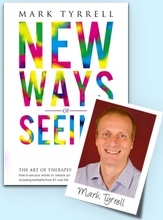
Sometimes we can't help but feel dragged down by a client.
“Friends are those rare people who ask how we are and then wait to hear the answer.”
– Ed Cunningham
I’d like to share something personal with you.
Thirty-plus years back, after a few weeks working with patients on a psych ward, I felt something strange and awful was happening to me.
I was so focused on the patients, with their depressions and psychoses and addictions and terrible life histories, that I was mulling over their situations all the time.
I worried about them when I wasn’t there, tried to think how I could help them be happier and live better.
Maybe I was idealistic in my youthful way, but at that time I seriously worried I was having some kind of breakdown or existential crisis as I lost perspective and any joie de vivre.
For a while I stopped sleeping, lost interest in non-work activities. I’d mull over particular patients and their miserable lot.
I gradually acclimated to my new work and, while I never lost sympathy or empathy, I learned how to partition my mind so as to have a proper sense of work/home balance. I began sleeping again, seeing friends, and I was better able to forget (until the next shift!) the torn minds and lives of those I worked with.
When we can be sympathetic, that is, appreciate how hard it is for someone without being swamped by maladaptive empathy, then we’re freed to be more effective in actually helping.
Anyway, I was reminded of all this recently by reading about some new research on emotional contagion.
Prefer to watch instead?
Are you susceptible to emotional contagion?
‘Emotional contagion’ is the process whereby people unconsciously and automatically ‘catch’ or ‘absorb’ the emotions of those around them.
This can occur through various channels, such as facial expressions, tone of voice, body language, and even written or online communication. A definition of charisma might be the capacity to greatly influence the feelings of people around you, infecting them with your mood through your facial expressions, energy, voice, actions, and words.
I’ve argued here that counsellors trying to be non-directive with their clients may be faced with an impossible task if they themselves happen to possess charisma.
But about that research I mentioned!
A recent study found that some psychologists and other ‘relationship professionals’ are much more susceptible to ‘catching’ negative emotions from their clients than others.1 Not only that, but the researchers found they could identify people who might unwittingly be at greater risk of emotional contagion.
Spotting those most vulnerable
In the study, 56 psychoeducation students watched emotionally evocative video clips and completed a self-assessment questionnaire called the Emotional Contagion Scale (ECS). Meanwhile, artificial intelligence software was used to analyze the participants’ facial expressions.
Using this AI software, the researchers were able to predict with a high degree of accuracy which individuals were more susceptible to emotional contagion.
But the results showed something else worrying.
A greater risk of depression
The results revealed that those most prone to emotional contagion were also at a heightened risk of depression.
Of course being easily influenced by the subtle and not-so-subtle emotional cues of others and being ‘infected’ with that emotion certainly isn’t the only risk factor for developing depression, but it may be quite a significant one.
I’ve written before about how to avoid burnout when treating depressed clients and also how to set boundaries with clients, but here are a few more thoughts on how we can care less to help (ourselves and our clients) more.
Tip one: Be aware of the power of emotional contagion
Spend 5 minutes with some people and you feel like a million dollars; spend 5 minutes with other people and your morale dips lower than the profit share from a chocolate teapot company.
People who are less affected by the moods and dispositions of others are low in ’emotional infectability’; those of us who are easily affected are high in infectability.
If you suspect you’re somewhat easily influenced by the feelings of others, remember that so that at least you’ll be better able to spot the origins of your feelings and put them in perspective.
Tip two: Belief is enough
Locus of control is important when it comes to handling emotional contagion. In other words, do we feel that we are the hapless and helpless victims of life, or do we believe we have at least some agency in how we feel?
According to research, our ability to change our own bad (grumpy, depressed) mood is determined primarily by whether we believe it’s possible to change our mood.2
So when you notice your emotional state has been negatively affected by others’ feelings, take responsibility and control over that. Realize that the power to regain a positive mood lies with you.
Of course, this is all well and good, but we do need to do more than simply believe we can change our state of mind after being brought down by a particularly ‘infectious’ client!
Tip three: Build your own decompression chamber
Treating pessimistic, depressed, anxious clients can be uplifting, of course. Especially when we help them make changes and live in more solution-focused and inherently satisfying ways. But sometimes we can’t help but feel dragged down by a client.
After such sessions, to avoid being made depressed by our clients we need to:
- Be mindful that, yes, we may have been emotionally infected (see tip one).
- Remember that we can clear that infection by changing our mood (see tip two). We have that power. And then…
- Take steps to actively feel better.
So, after a particular session or series of sessions that were hard on you, work to change your state.
Whether it’s science-backed ways of lifting mood – such as going for a walk in nature3 or other exercise,4 hanging out with upbeat people (good moods can be contagious too),5 having a cold shower,6 or eating a hot curry (hello, endorphins!)7, 8 – or just whatever floats your boat, do something positive!
Such activities can serve as a decompression chamber for the mind and body after harrowing client sessions, and they do work (if you actually do them!).
Tip four: Practise mindfulness
Mindfulness is a vital tool for the busy (or even non-busy) practitioner, to keep you calm, hopeful, empowered, and well.
The observing self is a wonderful resource. To calmly watch one’s own feelings and thoughts, and ascertain more objectively what’s going on and what may be needed, is an immensely valuable practice.
After a session, some meditation or listening to a relaxation session or hypnotic audio may be just the thing to help you through the gateway from one (disempowered) state of mind to another, better one.
The last point, though it’s been said many times, bears repeating.
Tip five: Meet your needs in balance (of course!)
If I am starving, I will have little to no spare capacity to think of anything other than food. So too a failure to meet our emotional needs can interfere with our capacity to be effective in spheres other than and beyond simply meeting emotional needs.
For example, an attention-starved individual may unconsciously try to squeeze attention from a situation which requires him to pay attention rather than simply receive it – such as a learning environment. Because of his emotionally starved state, he has limited spare capacity to learn or let others learn.
This is natural. When we meet our needs in balance outside of our therapy/coaching practice, we have more spare capacity to be effective (and immune from negative emotional contagion) during our practice.
We are happier, healthier and better at what we do when we care for and look after ourselves.
Train Online with Mark Tyrrell
Did you know we have a whole suite of online courses for practitioners, all delivered through our platform Uncommon U? This means it’s easy to continue with your course whether you’re on a laptop, tablet or phone so you can get your CPD hours no matter where you are. Read about Mark’s courses here.
Notes:
- Plusquellec, P., Smart, K., & Denault, V. (2023). Facial Reactivity to Emotional Stimuli is Related to Empathic Concern, Empathic Distress, and Depressive Symptoms in Social Work Students. Psychological Reports, 00332941231181027.
- Catanzaro, S. J., & Mearns, J. (1990). Measuring generalized expectancies for negative mood regulation: Initial scale development and implications. Journal of personality assessment, 54(3-4), 546-563.
- Bratman, G. N., Daily, G. C., Levy, B. J., & Gross, J. J. (2015). The benefits of nature experience: Improved affect and cognition. Landscape and Urban Planning, 138, 41-50.
- Choi, K. W., Chen, C. Y., Stein, M. B., Klimentidis, Y. C., Wang, M. J., Koenen, K. C., & Smoller, J. W. (2019). Assessment of bidirectional relationships between physical activity and depression among adults: a 2-sample mendelian randomization study. JAMA psychiatry, 76(4), 399-408.
- Fowler, J. H., & Christakis, N. A. (2008). Dynamic spread of happiness in a large social network: longitudinal analysis over 20 years in the Framingham Heart Study. Bmj, 337.
- Shevchuk, N. A. (2008). Adapted cold shower as a potential treatment for depression. Medical hypotheses, 70(5), 995-1001.
- Small, G. W. (2008). Beyond standard anti-dementia therapies: Diet, exercise, socialization, and supplements. CNS spectrums, 13(S16), 31-33.
- Ringman, J. M., Frautschy, S. A., Teng, E., Begum, A. N., Bardens, J., Beigi, M., … & Cole, G. M. (2012). Oral curcumin for Alzheimer’s disease: tolerability and efficacy in a 24-week randomized, double blind, placebo-controlled study. Alzheimer’s research & therapy, 4, 1-8.






